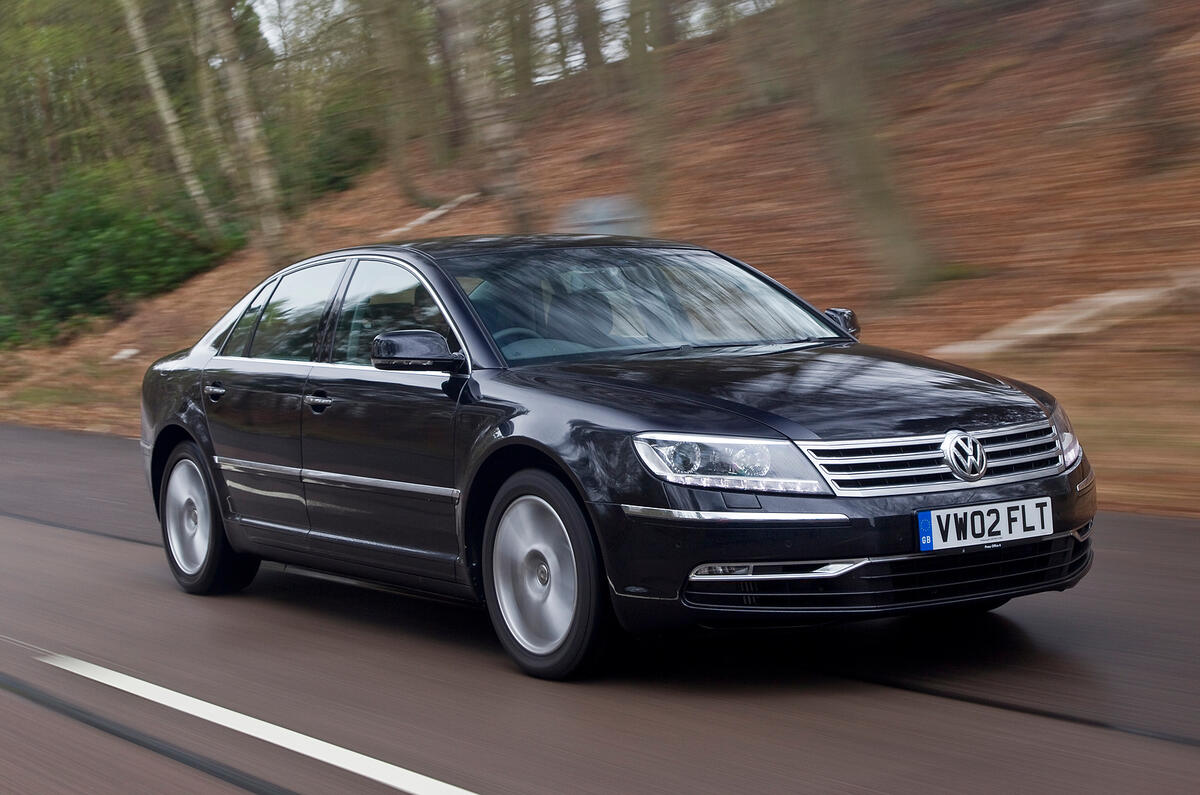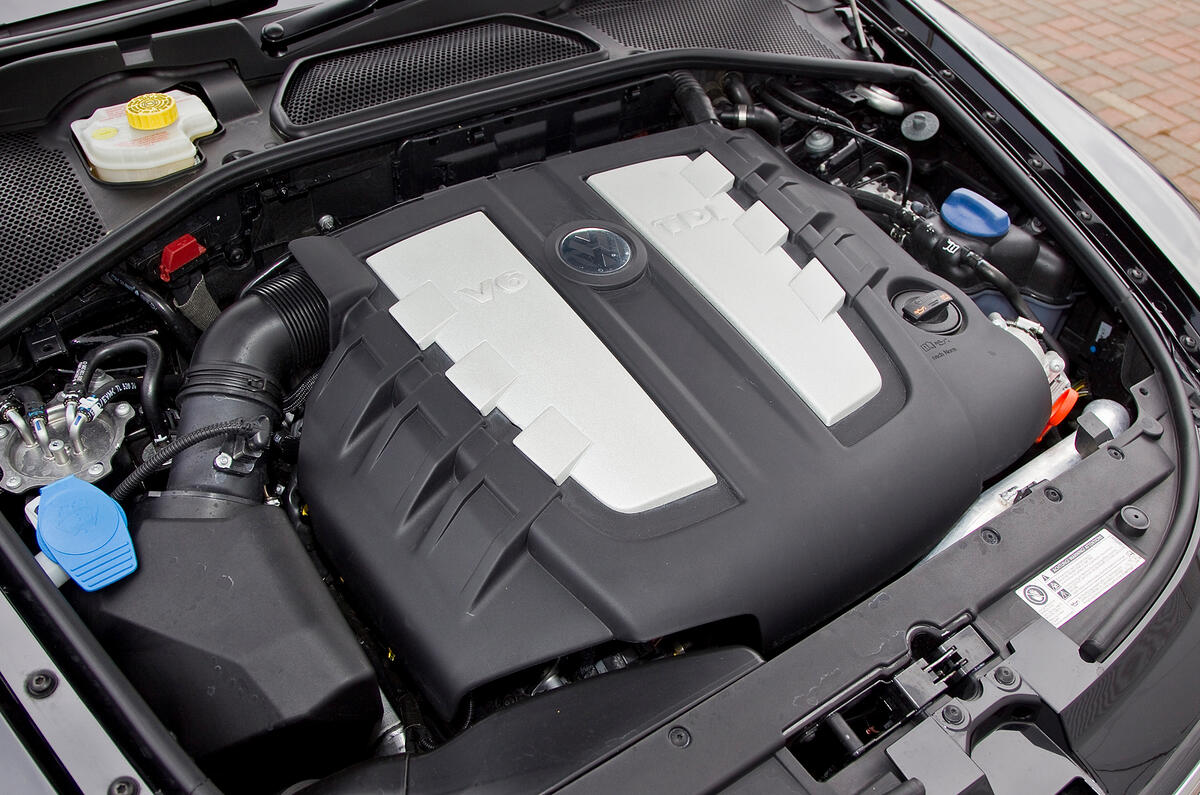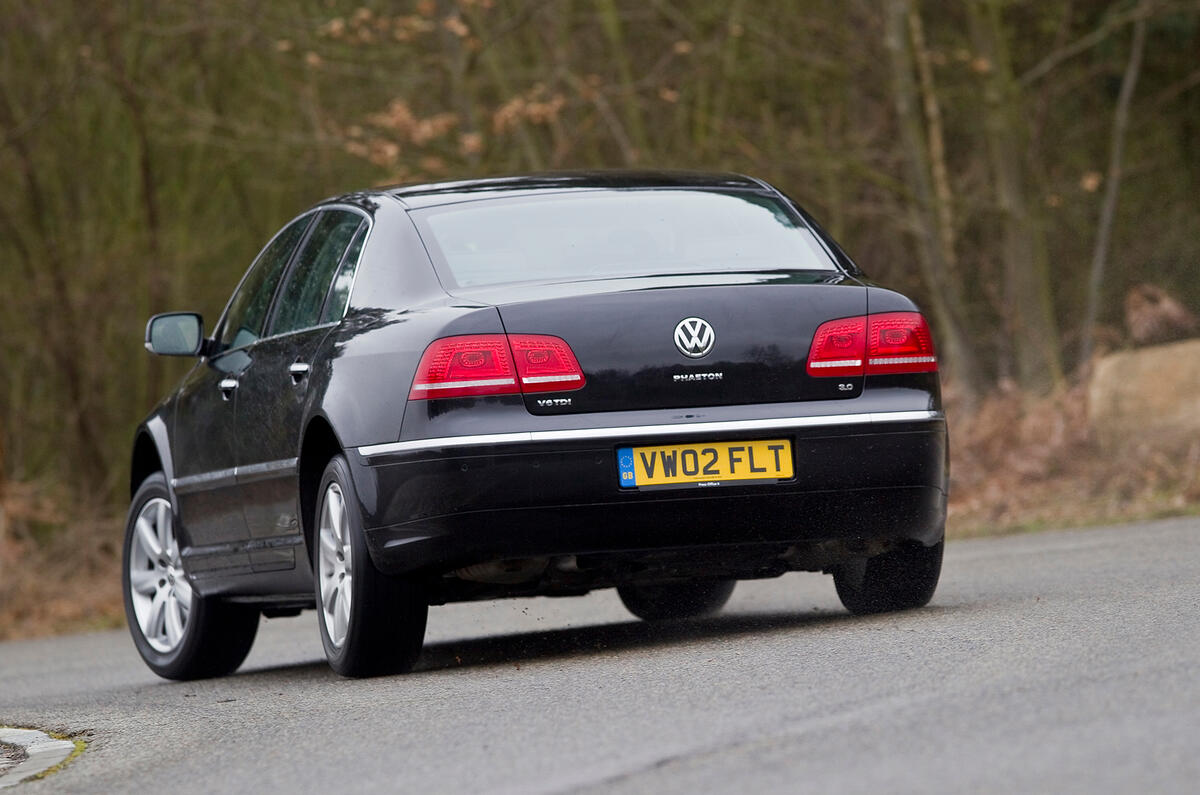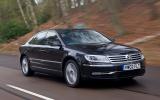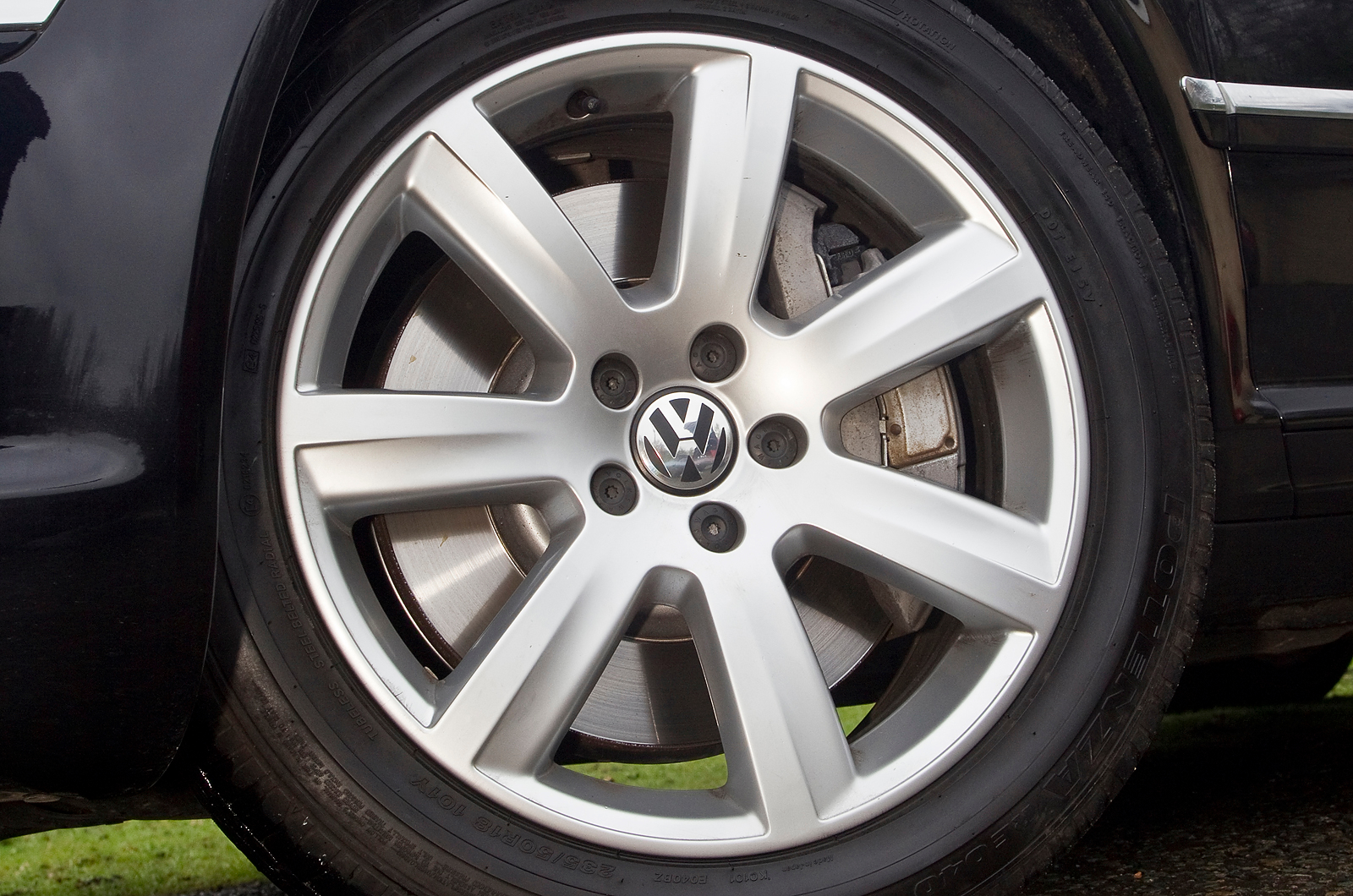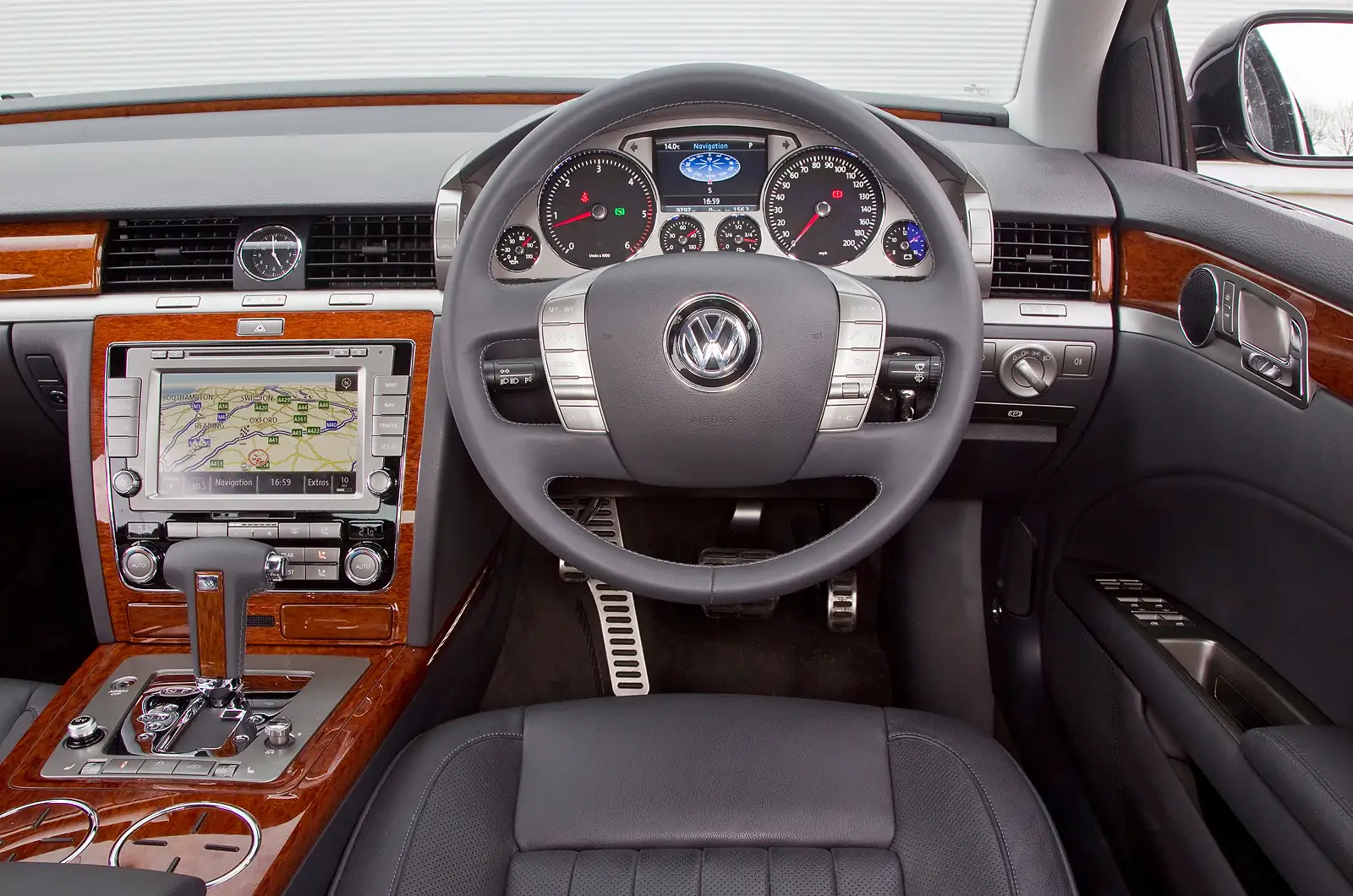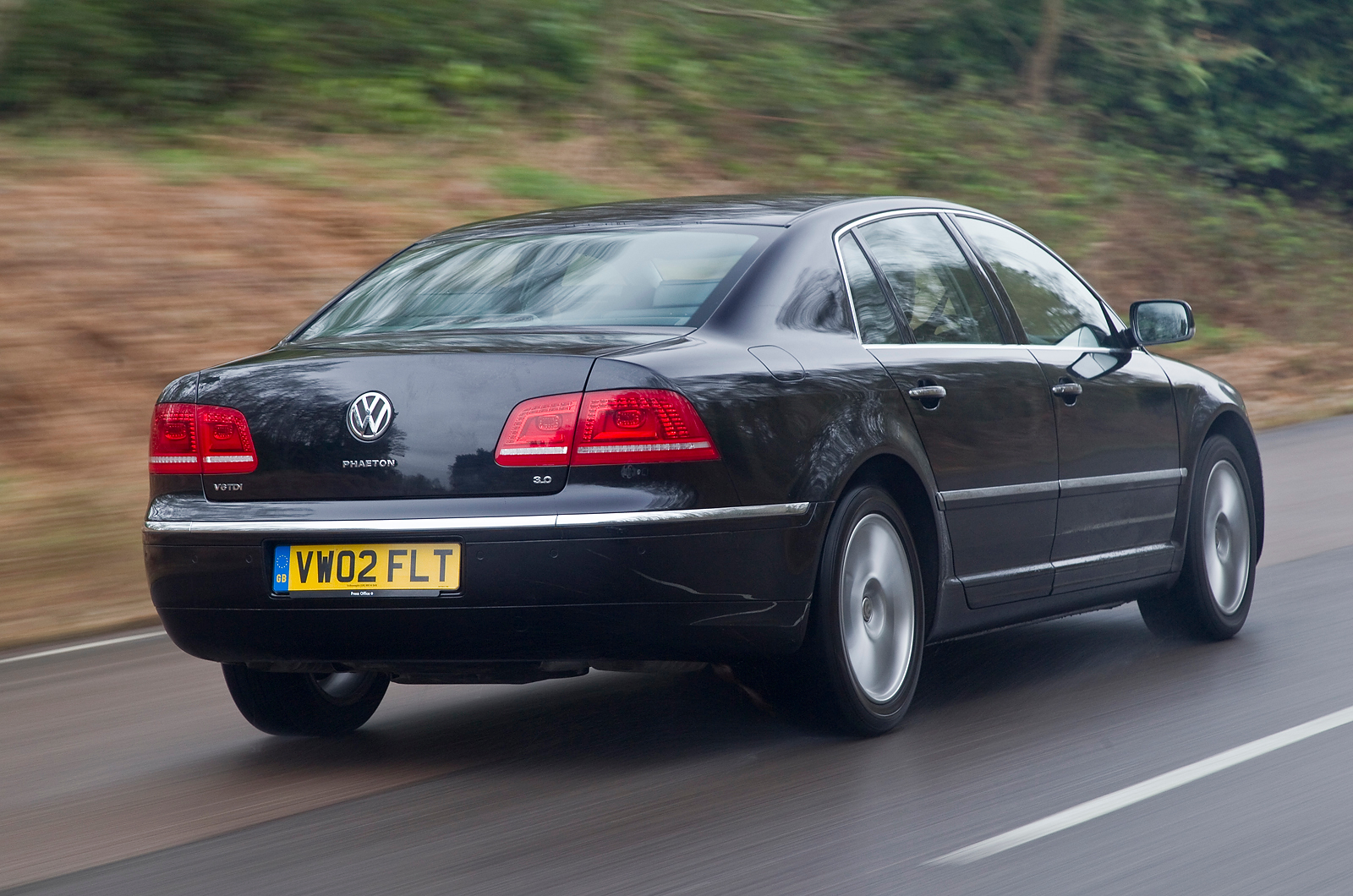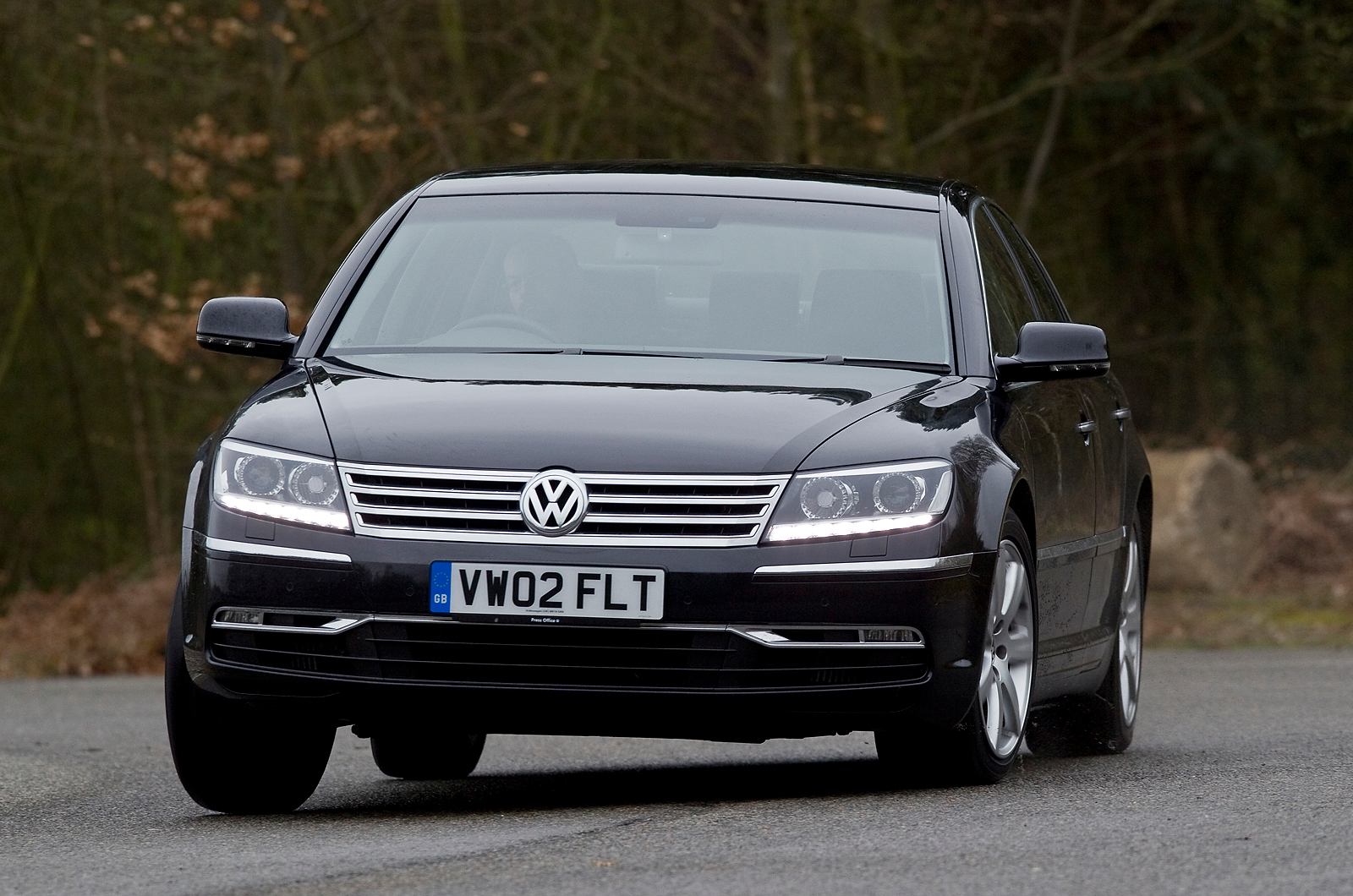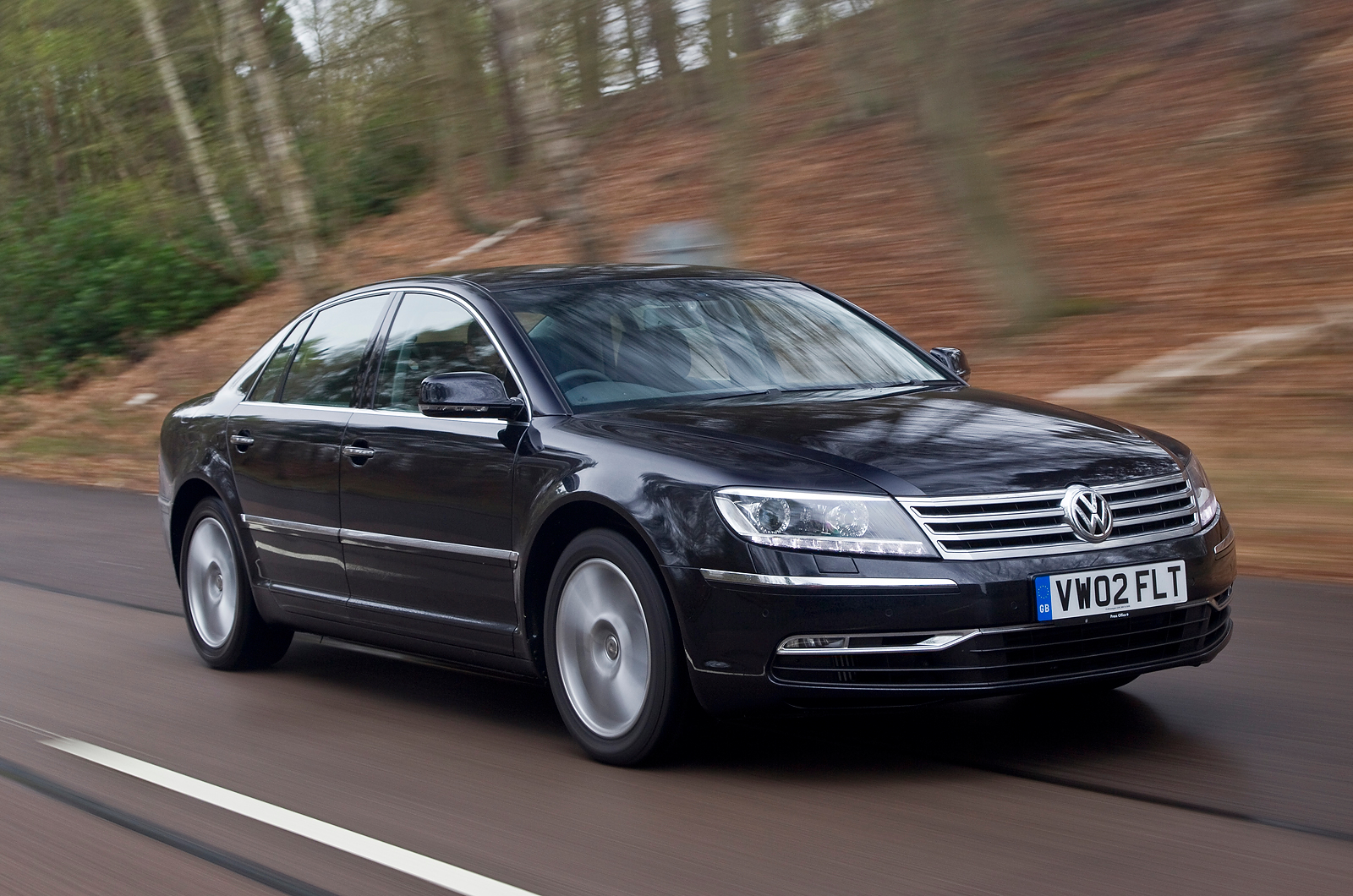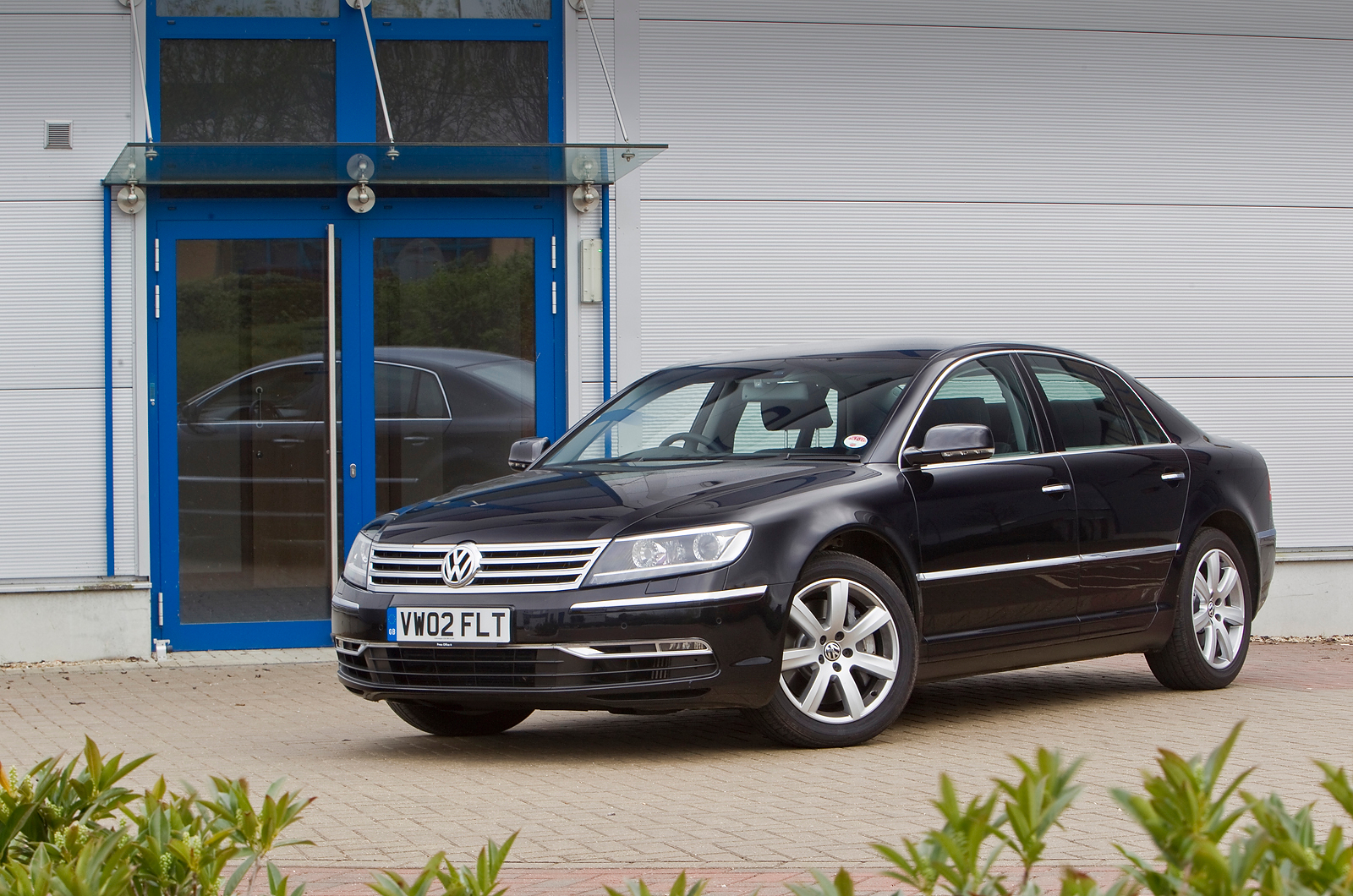A decade after its original launch, today the Volkswagen Phaeton owes its continuing existence to the Chinese market, which takes more than half of the 4000 units that roll annually from the Phaeton’s bespoke, glass-walled, Dresden factory.
The Phaeton sells in tiny numbers in most European markets and has been cancelled altogether in the US. But thanks to its success in China, there’s sufficient demand for Volkswagen to continue not just building, but also improving the car.
In 2008 VW installed its latest-generation 3.0-litre V6 diesel engine, and in 2011 the Phaeton was tweaked again, to receive some significant styling changes (that now all-too familiar VW nose) and updates to its interior.
Only a V6 diesel in short or long wheelbase is now offered in the UK, though in other markets Volkswagen also offers the oddball W12 petrol engine in long wheelbase form only.
The larger one puts an extra 120mm of length between the wheels. This 444bhp 6.0-litre engine is essentially two V6 engines put together and is supposed to rival the V8s on offer in other luxury cars.



